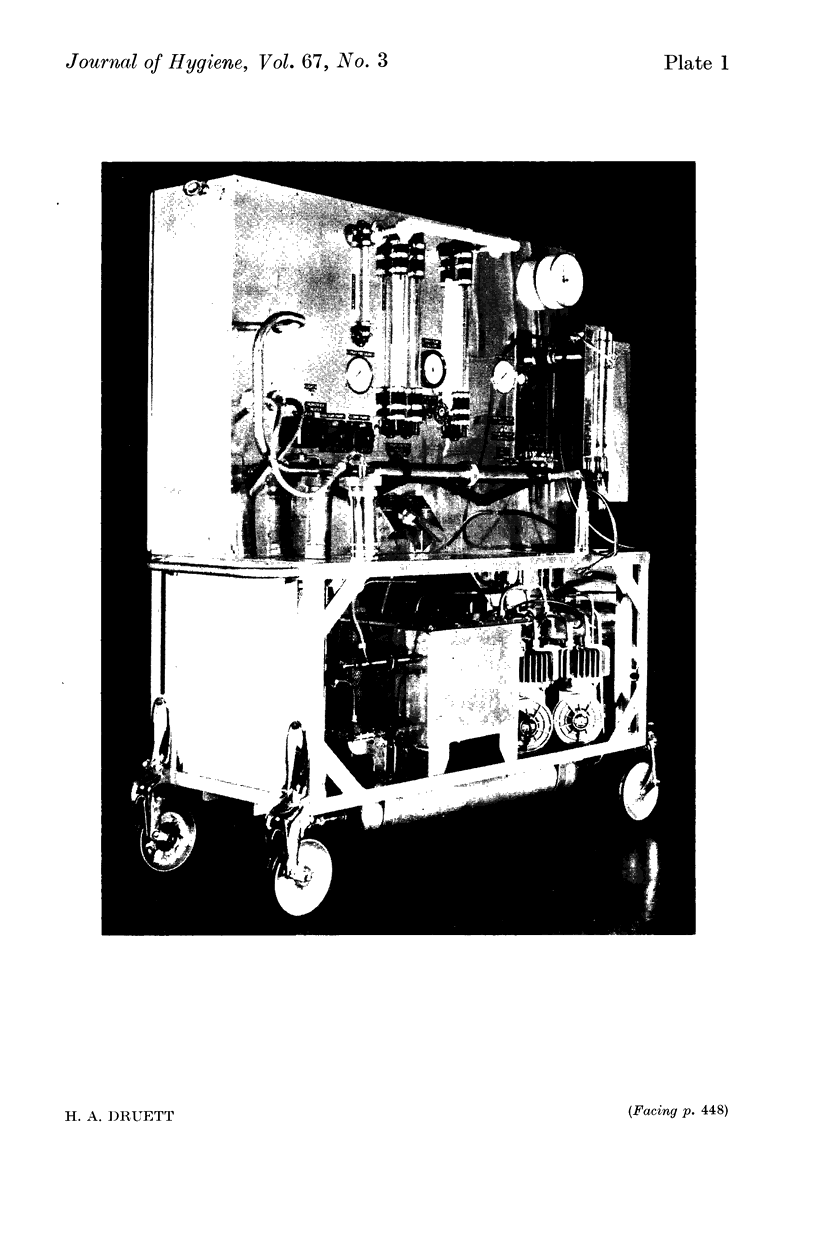Full text
PDF












Images in this article
Selected References
These references are in PubMed. This may not be the complete list of references from this article.
- DRUETT H. A. The construction of critical orificies working with small pressure differences and their use in controlling airflow. Br J Ind Med. 1955 Jan;12(1):65–70. doi: 10.1136/oem.12.1.65. [DOI] [PMC free article] [PubMed] [Google Scholar]
- Druett H. A., Packman L. P. Sensitive microbiological detector for air pollution. Nature. 1968 May 18;218(5142):699–699. doi: 10.1038/218699a0. [DOI] [PubMed] [Google Scholar]
- GOLDBERG L. J., WATKINS H. M., BOERKE E. E., CHATIGNY M. A. The use of a rotating drum for the study of aerosols over extended periods of time. Am J Hyg. 1958 Jul;68(1):85–93. doi: 10.1093/oxfordjournals.aje.a119954. [DOI] [PubMed] [Google Scholar]
- HARPER G. J. Airborne micro-organisms: survival tests with four viruses. J Hyg (Lond) 1961 Dec;59:479–486. doi: 10.1017/s0022172400039176. [DOI] [PMC free article] [PubMed] [Google Scholar]
- HARPER G. J., HOOD A. M. Lung retention in mice exposed to airborne micro-organisms. Nature. 1962 Nov 10;196:598–599. doi: 10.1038/196598b0. [DOI] [PubMed] [Google Scholar]
- HOOD A. M. INFECTIVITY OF INFLUENZA VIRUS AEROSOLS. J Hyg (Lond) 1963 Sep;61:331–335. doi: 10.1017/s0022172400039619. [DOI] [PMC free article] [PubMed] [Google Scholar]
- May K. R., Druett H. A. A microthread technique for studying the viability of microbes in a simulated airborne state. J Gen Microbiol. 1968 May;51(3):353–366. doi: 10.1099/00221287-51-3-353. [DOI] [PubMed] [Google Scholar]



